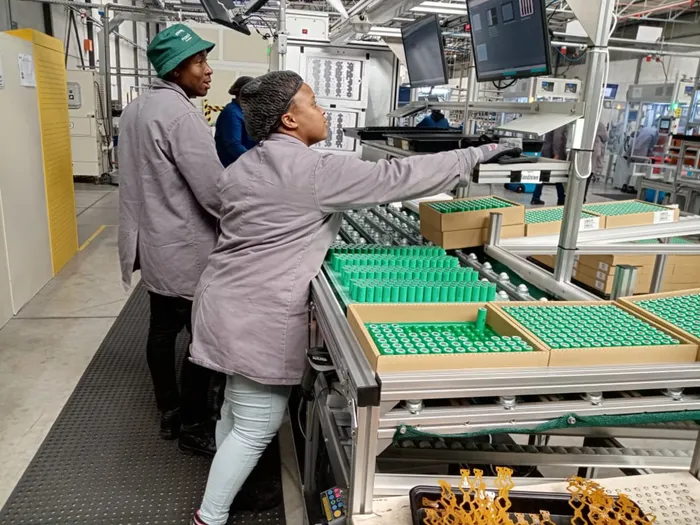Manufacturing sector continues to struggle as output plummets for eighth month in a row
MANUFACTURING

The sector continued on its downward spiral in March, ending the first quarter of 2025 on the backfoot and likely to negatively contribute to the quarter’s gross domestic product (GDP) print.
Image: Anathi Mlonyeni
Manufacturing output in South Africa is facing a challenging start to 2025, with output continuing to decline and showing signs of deeper economic troubles.
The sector continued on its downward spiral in March, ending the first quarter of 2025 on the backfoot and likely to negatively contribute to the quarter’s gross domestic product (GDP) print.
Data from Statistics South Africa (Stats SA) on Thursday showed that manufacturing production fell by 0.8% year-on-year in March, following a 3.2% slump in February.
This marked the eighth consecutive month of annual contraction and the fifth consecutive month of declines in industrial activity, although it was the mildest in the sequence.
Nicolai Klaassen, director of industry statistics at StatsSA said four of the 10 manufacturing divisions recorded lower production levels, with the petroleum, chemical products, rubber and plastic products division the largest track on gross.
The manufacturing data for March concluded the results for the first three months of the year.
“Manufacturing production decreased by 2.3% in the first quarter of 2025, compared with the fourth quarter of 2024,” Klaasen said.
“Seven of the 10 manufacturing divisions recorded negative growth rates over this period, with petroleum, chemical products, rubber and plastics, electrical machinery and the automotive division recording a third consecutive quarter of decline.”
On a seasonally adjusted monthly basis, manufacturing output shrank by 2.2% in March, after an upwardly revised 0.7% rise in the prior month.
The manufacturing sector’s lacklustre outcome is in line with the performance of the Absa Purchasing Managers Index (PMI) as it remained in contractionary territory in March, with the business activity and new sales orders’ indices still subdued.
Sentiment in the sector was also severely affected, with the expected business conditions index dropping by 9.4 points to 48.6 - its lowest level since November 2023.
FNB senior economist Thanda Sithole said the data from Stats SA confirmed that the manufacturing sector dragged real GDP growth in the first quarter, with output falling by a steeper decline than the 0.9% recorded in the fourth quarter of 2024.
Sithole said this underscored subdued domestic demand, a challenging global environment, and elevated policy uncertainty.
“While domestic demand is expected to gradually recover and support manufacturing activity, the outlook remains clouded by global uncertainties.”
“Nonetheless, the ongoing implementation of structural reforms, alongside the recent launch of Operation Vulindlela Phase 2.0, will be critical in easing binding constraints and supporting economic activity over the medium-to-long term.
The Bureau for Economic Research (BER) Manufacturing PMI for April also suggested continued weakness at the start of 2Q25, with the business activity and new sales orders indices falling by 8.3 and 12.8 points to 40 and 36.1, respectively.
“Worryingly, advance indications provided by April’s PMI release show that conditions worsened at the beginning of the second quarter with both the business activity index and new sales orders’ indices falling further into contractionary terrain, underpinned by a slump in both demand conditions domestically and export sales,” said Investec economist, Lara Hodes.
“Moreover, the index measuring anticipated business conditions (in six months’ time) moved into contractionary territory in April for the first time since November 2023. According to the BER, “respondents' commentary was decidedly more negative in April”, with heightened uncertainty caused by the trade war as well as “local developments”, weighing on sentiment.”
BUSINESS REPORT